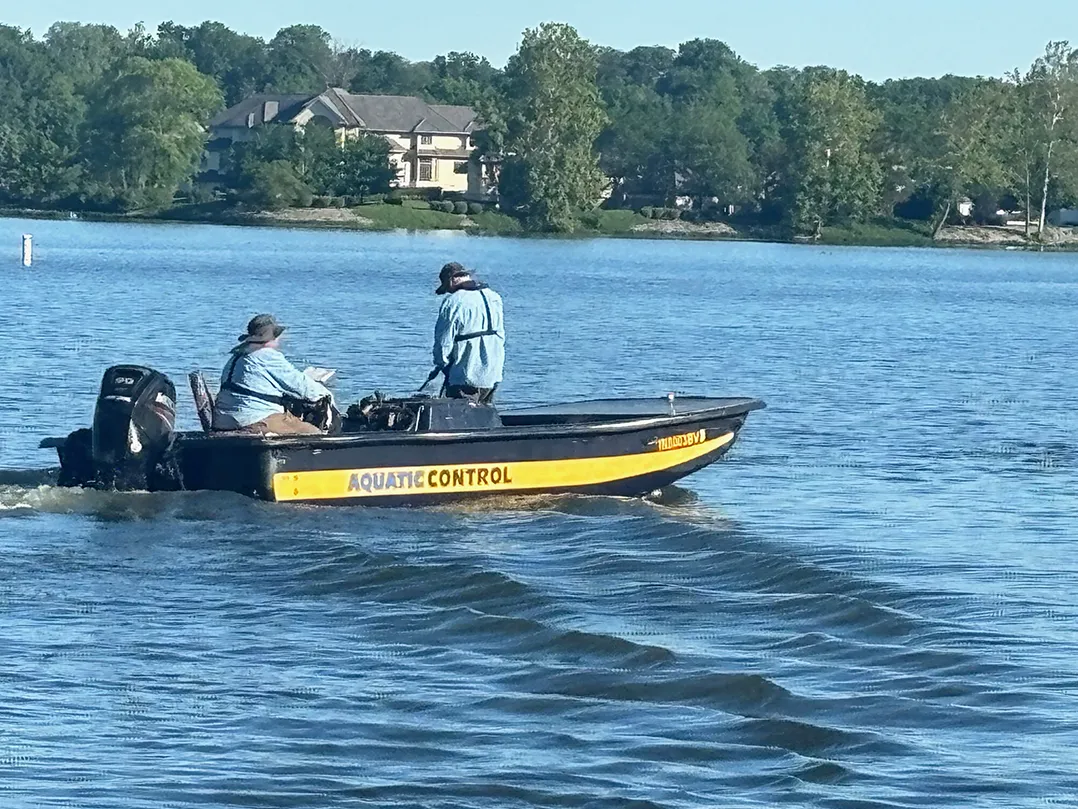A group of Geist Reservoir property owners is in the process of creating a Geist Conservancy District, with the aim of maintaining the body of water with more extensive algae treatments, dredging and sediment control.
The Geist Coalition is a volunteer organization that was formed about 20 years ago. Program Director Joni Forestal said the group is spearheading the effort to form the conservancy district, which would have a board of directors and the ability to create a budget for maintaining the reservoir based on property taxes.
“A reservoir’s life expectancy is about (100) years if no one maintains it,” she said. “I don’t know the exact year that Geist was formed — in the 1940s, I believe. So, we’re coming up on that.”
Geist Reservoir first opened in 1943. It was developed by the Indianapolis Water Co., led by then-owner Clarence Geist. It is now owned by Citizens Energy Group, which provides water to the Indianapolis area.
Citizens Coordinator of Media Affairs Benjamin Easley said in an email exchange that Citizens’ focuses on supplying water and ensuring its quality for customers.
“The costs of maintenance are borne by our customers at rates established by the Indiana Utilities Regulatory Commission and must therefore have a direct benefit for our water customers,” he said.
Easley said Citizens has spent millions of dollars dredging the inlet area of Geist Reservoir east of Olio Road, most recently in 2018. The City of Fishers also conducted some dredging in 2020, he said, and added that water storage capacity at Geist has not changed significantly in recent years.
“Citizens also closely monitors all its water supply sources for vegetation and algae,” Easley said. “If the presence of these would impact drinking water quality or satisfaction, Citizens will chemically treat the reservoir (per Indiana Department of Environmental Management guidelines) to avoid such impacts.”
But, Easley said, the company doesn’t perform dredging or algae treatment to improve recreational boating or aesthetics in front of private property.
Forestal said the coalition arranges weekly algae treatments during the summer months for property owners who request it — and pay for it.
“It’s a voluntary contribution that homeowners make if they want their water treated in front of their house,” she said.
The treatments cost $1,250 per waterfront property owner, and while it does help, it would be more effective and cost less per property owner if more people participated.
Dredging to remove sediment that builds up over time is another concern and a much more expensive one.
Coalition member Keith Mathews said sediment is carried in by various creeks that feed the reservoir. Some of the shallower locations close to those creeks have, at most, a foot of water, he said.
“There’s community docks there that are basically sitting on ground,” he said, adding that individual property owners now have to pay for any dredging.
If the conservancy district is able to form, he said, the board could set a budget that could help with dredging. Even better, Mathews said, would be to install catch basins.
“Catch all that stuff before it gets to the reservoir,” he said. “And then there’ll be a process to clean out the catch basins. So, if you’re asking me personally, I think catch basins will be a priority. Then you dredge, because if you dredge without catch basins — a year later, you have the same issue.”
Like everything else, catch basins are expensive.
The conservancy district’s proposed budget is $2 million a year, with most of the revenue coming from a property tax. A home assessed at $1 million would pay about $400 a year, according to the GCD website. There also is a proposed motorized watercraft permit fee for all users — $125 a year for residents of the district and $250 a year for nonresidents.
Forestal said they hope to have enough signatures from property owners to establish the new Geist Conservancy District by the end of this summer.
“It’s two-fold, what we need,” she said. “We need 30 percent of the waterfront homeowners signatures, (which they have). In addition to the 30 percent, we need 51 percent of the highest-assessed-value properties. That is where we are lacking.”
But, she said, they are only about 100 property owners shy of that 51 percent.
Forestal, a Realtor, said it makes financial sense for property owners to support the effort.
“If the reservoir goes away, that takes away a significant amount of property value,” she said, adding that if everyone contributes, Geist Reservoir will continue to be a great place to live.
For more about the Geist Conservancy District, visit geistconservancy.com.





